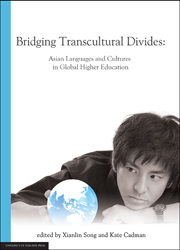Book contents
- Frontmatter
- Contents
- Acknowledgements
- List of Contributors
- Foreword
- Part I Another pedagogy is possible
- Part II Re-locating teaching and learning
- Part III Transforming curriculum in Asian language teaching
- 4 Teaching Asian languages from an intercultural perspective: Building bridges for and with students of Indonesian
- 5 A Study Skills Action Plan: Integrating self-regulated learning in a diverse higher education context
- 6 The challenge of motivation: Teaching Japanese kanji characters to students from diverse language backgrounds
- 7 Personal growth through intercultural communication: Engaging native speakers and reflective learning in Japanese language curriculum
- Part IV Capitalising on Asian social and cultural studies in contexts of diversity
- Part V Bridging learning gaps
5 - A Study Skills Action Plan: Integrating self-regulated learning in a diverse higher education context
from Part III - Transforming curriculum in Asian language teaching
Published online by Cambridge University Press: 05 June 2013
- Frontmatter
- Contents
- Acknowledgements
- List of Contributors
- Foreword
- Part I Another pedagogy is possible
- Part II Re-locating teaching and learning
- Part III Transforming curriculum in Asian language teaching
- 4 Teaching Asian languages from an intercultural perspective: Building bridges for and with students of Indonesian
- 5 A Study Skills Action Plan: Integrating self-regulated learning in a diverse higher education context
- 6 The challenge of motivation: Teaching Japanese kanji characters to students from diverse language backgrounds
- 7 Personal growth through intercultural communication: Engaging native speakers and reflective learning in Japanese language curriculum
- Part IV Capitalising on Asian social and cultural studies in contexts of diversity
- Part V Bridging learning gaps
Summary
Introduction
In recent years, there has been a dramatic increase in international student enrolments in language programs in Australian universities, accelerating the diversity of the language student cohort in the classroom. This increasing student diversity presents many challenges for language lecturers, necessitating both a review of pedagogical strategies and new engagement in innovative teaching practices to enhance learning for all students. As this chapter will show, this is a particularly pressing issue in the context of the first-year Japanese course at an Australian research-intensive university.
Japanese 1A is a beginners’ course for non-native speakers with no or little previous knowledge of Japanese. Since 2008, the student numbers in this course have more than doubled (n=120, 2008; n=190, 2009; n=260, 2010) and in 2010 it became the largest foreign language course at the University. In Semester 1, 2010, this student cohort was diverse in terms of cultural, linguistic and disciplinary backgrounds. Around 60 per cent were international students from a variety of cultures and first language backgrounds, and 90 per cent of them were enrolled in various non-Arts degrees.
Such a unique student group inevitably has profound implications for pedagogy in this large first-year course. It is imperative to create and deliver learning environments where all students feel equally able to succeed both in and beyond their first year at university. One way to create such an environment that maximizes each student's chance of success is through curriculum revisions that integrate study skills development into the curriculum of the mainstream courses/subjects that students are studying for their degree (DEEWR 2008; Wingate 2006).
- Type
- Chapter
- Information
- Bridging Transcultural DividesAsian Languages and Cultures in Global Higher Education, pp. 101 - 130Publisher: The University of Adelaide PressPrint publication year: 2012
- 3
- Cited by

